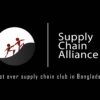Data is the new gold, but by itself, it is completely useless. “Big data” is used to describe datasets that are very complex in nature, large, and unable to be handled by traditional applications. So, it is a term that describes large volumes of high velocity, complex, and variable data that require advanced techniques and technologies to enable the capture, storage, distribution, management, and analysis of the information. And when it is processed, it can become an asset for any organization among its various functions. The overall goal of big data analysis is to support better decision-making.
Big data analytics is playing an instrumental part in improving supply chain management. Big Data is having a positive effect on all supply chain activities. It ranges from reducing delivery times to identifying methods for closing the communication gap between manufacturers and suppliers. Analytics reports enable decision-makers to increase operational efficiency and productivity. Supply chain analytics broadens data-driven choices to reduce costs and enhance administration.
Data is the driver of corporate dynamics at tactical, strategic, and operational levels. Organizations in the supply chain must look forward to the latest, unambiguous, precise, and significant data. That is the reason why taking advantage of the potential of big data is crucial for the supply chain management. In this case, what are the solid opportunities that Big Data provides for Supply Chain Management? Here we will discuss five probable opportunities for Supply Chain Management can be advanced using Big Data:
1. Efficient and Productive Inventory Management:
Crucial information turns out to be more transparent and accessible to a large number of parties as parties collaborate and share Big Data insights across the supply chain network. This permits the abbreviating of planning cycles and the activity of planning with more significant levels of granularity, prompting more proficient inventory management practices, eventually bringing about optimized inventory stocks.
For example, Amazon uses Big Data analytics in its inventory management. It chooses warehouses based on the nearness of its vendors and customers to lessen distribution costs. Amazon uses Big Data analytics to disperse stock according to customer preferences in specific regions.
Big Data permits automated systems to work by intelligently routing a wide range of different data sets and data streams. For instance, Amazon already has automated its fulfillment centers, which use little orange KIVA robots to grab things from shelves.
2. Expanded Operations Efficiency and Maintenance:
Big Data analytics have made it possible to make better models. These models take into account more accurate choices, regular increases in productivity through mechanization, leaner operations, and better service through predictive analytics.
For example, the last mile of a supply chain is notoriously inefficient, costing up to 28% of the total delivery cost of a package. Numerous hindrances lead to this, like:
- It is challenging for large delivery trucks to park close to their destination in urban areas. Drivers often need to park quite a while away, and afterward, walk the package to its final location.
- Some things must be signed for, and if a customer isn’t home, the item can’t be delivered.
- Deliverymen need to take additional care not to harm the package during this last leg, and they should also professionally present themselves to the recipient.
Adding to these difficulties, it tends to be hard to know precisely what’s happening during the last leg of delivery. Packages are mostly tracked up until this point, leading some to say that the last mile is the “black box” of delivery data.
Big Data plans to address many of these difficulties. In an interview with the Wall Street Journal , Matthias Winkenbach, director of MIT’s Megacity Logistics Lab, details how last-mile analytics are yielding helpful information. Due to the low cost, ease, and universality of fast mobile internet and GPS-enabled smartphones, as well as the spread of the Internet of Things through sensors and scanners, shippers can see how the delivery process goes from beginning to end-even during the last mile.
Now imagine a UPS delivery truck with a GPS sensor on it making a delivery in a big city. After parking nearby, the delivery man’s smartphone GPS keeps on streaming information to the UPS center, giving a steady record of how long the delivery is required. This isn’t only important for the customer, but it also permits logistics companies to see patterns at play that can be utilized to optimize their delivery strategies. For instance, Dr. Winkenbach said that his data showed that “Deliveries in big cities are quite often improved by making multi-tiered frameworks with smaller distribution centers spread out in a few areas, or simply pre-assigned parking spaces in garages or lots where smaller vehicles can take packages the rest of the way.”
3. Added Integration and Collaboration:
Big Data can improve mixing and collaboration within supply chains. Implementing cross-functional integration and collaboration approaches with key accomplices can construct a culture of trust, prompting more significant levels of information sharing, and assisting with improvements across the entire supply chain ecosystem.
For instance, keeping perishables fresh has been a constant test for logistics companies. However, Big Data and the Internet of Things could give delivery drivers and managers a vastly improved idea of how they can prevent costs because of perished goods.
Let’s say a delivery truck for Igloo is transporting a shipment of ice cream and desserts. They could install a temperature sensor inside the truck to monitor the condition of the products inside, and give this data, alongside traffic and roadwork data, to a central routing computer.
This computer could then alert the driver if the initially picked route would cause the ice cream to melt, and recommend backup or alternate ways to go instead.
4. Improved Information Management:
Big Data empowers upgraded discovery, accessibility, utilization, and provisioning of data inside organizations and the supply chain. It enhances information, which is an important driver of supply chain management. Here, ‘information’ in the supply chain is the data and analysis concerning facilities, inventory, transportation, and customers. It can enable the disclosure of new informational indexes that are not yet being utilized to drive value.
For example, Flipkart depends on Big Data to ensure top-notch supply chain management. Flipkart improves its algorithms to precisely foresee delivery dates, increase warehouse automation, and optimize routes through advanced mobile technology.
5. Intensified Logistics:
Product traceability with the help of data prompts a decrease in lead-time, for instance by in-transit processing of products. Real-time rescheduling, route planning, re-routing, etc. can be enabled by it.
Big Data and prescient analytics give logistics companies the additional edge they need to overcome different obstacles. Sensors on delivery trucks can collect weather data, street upkeep data, fleet maintenance plans, real-time fleet status pointers, and staff schedules, and all can be coordinated into a framework that looks at the past historical trends and offers guidance appropriately.
UPS is a real-world example of Big Data logistics prompting big savings. After analyzing their data, UPS discovered that trucks turning left were costing them a lot of money. In other words, UPS found that transforming into oncoming traffic was causing a lot of delays, squandered fuel, and danger.
As a post from The Conversation titled “Why UPS drivers don’t turn left and you probably shouldn’t either” states, UPS “claims it utilizes 10 million gallons less fuel, emits 20,000 tons less carbon dioxide, and delivers 350,000 additional bundles each year” (after rolling out the improvement). 10 million gallons of gas is a lot of cash-that is some genuine benefit and a Big Data example in the supply chain.
Now, UPS drivers just turn left about 10% of the time, opting to go straight or turn right instead. Because of this “left turns only when absolutely necessary” strategy, UPS has additionally diminished the number of trucks it uses by 1,110 and decreased the company fleet’s total distance traveled by 28.5 million miles.
We’re on the cusp of Big Data changing the idea of the supply chain. Big Data in the supply chain can be utilized to diminish various inefficiencies like last-mile delivery, provide transparency, advance and optimize deliveries, protect perishable goods, and automate the entire supply chain.
Nowadays companies are getting more and more aware of these possibilities, and are endeavoring to make more data-driven decisions moving forward. Using sensors and the Internet of Things, combined with business intelligence software, forward-thinking companies are already diminishing costs and expanding consumer loyalty and satisfaction. But in the perspective of Bangladesh, there are still many barriers to implementing this. Poor data quality and lack of trust in data, time-consuming activity, data scalability, behavioral issues, etc. are the main barriers to implementing Big Data analytics in the supply chain of various Bangladeshi companies. But still, there are lots of positives and potential. Firms will be able to take advantage of the potential if they can get past problems like a lack of the right resources, security, and privacy, money, support from top management, skills, data integration and management, and, most importantly, methods or processes.







